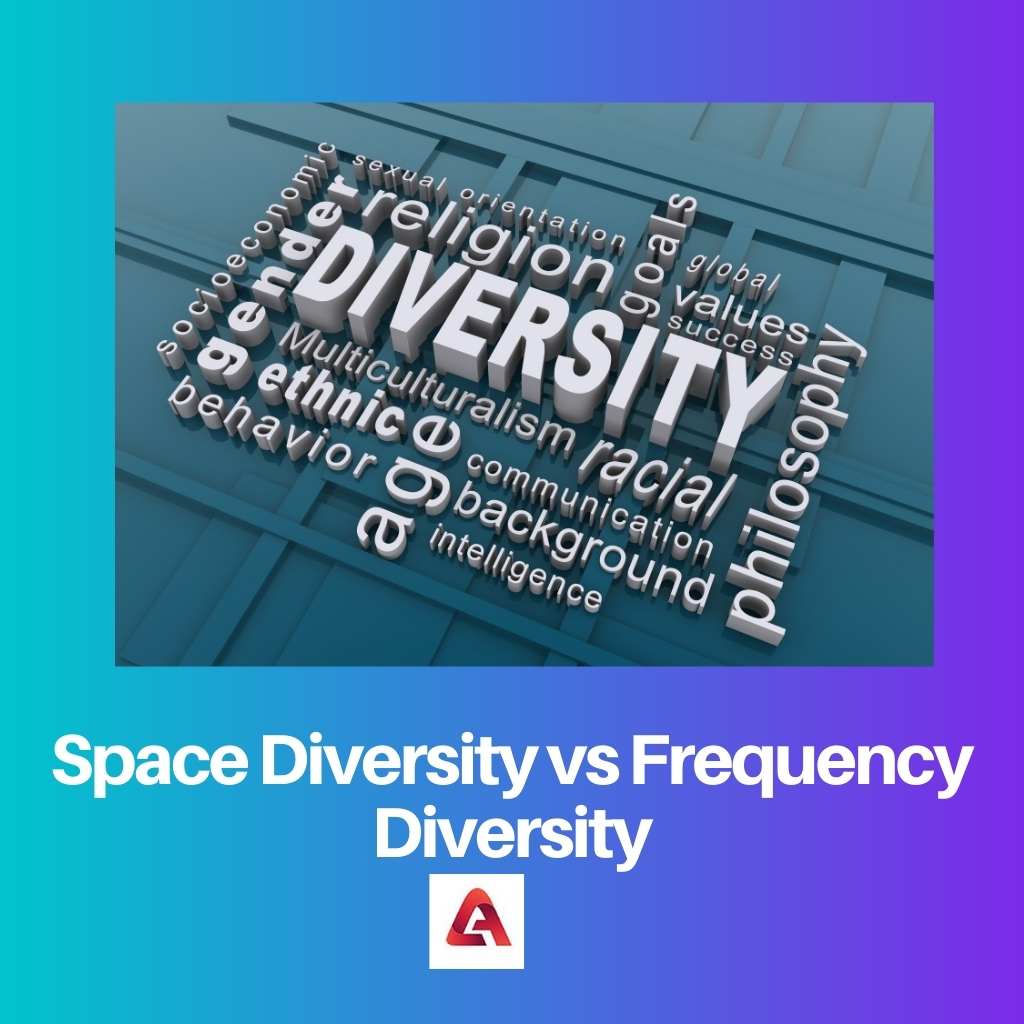We’ve all used radios or at least heard of them in our lifetime. However, very few know the mechanics behind the functioning of these devices.
Space and frequency diversity are two kinds of signal transmissions that use antennas and different wireless links to operate radios and connected devices.
Key Takeaways
- Space diversity utilizes multiple antennas at different locations for signal transmission and reception, while frequency diversity uses multiple frequencies to transmit the same information.
- Space diversity enhances signal reception by reducing fading effects, whereas frequency diversity mitigates multipath fading and narrowband interference.
- Space diversity requires more physical infrastructure, while frequency diversity demands additional bandwidth and frequency planning.
Space Diversity vs Frequency Diversity
Space diversity is used in wireless connections to transmit signals. Two adjacent antennas are required to transmit signals in space diversity. It is used to boost communication quality. Frequency transmission is a transmission method in which messages are sent through carrier frequencies. In frequency diversity, a single antenna is required to transmit the message.

Several different terms know space diversity and essentially refer to the replica, which means a similar signal being transmitted through a different antenna.
This process can also make use of more than a single antenna for transmitting purposes.
Space diversity is used to improve radio communication quality between the receiver and the transmitter.
Frequency diversity is another kind of signal transmission process. In this method, the same information thread is transmitted.
This transmission occurs over more than one radio channel. Radio signals and components are sent over on various channels to reach the desired person.
It is used to reduce the errors that may occur while transferring over the signals.
Comparison Table
| Parameters of Comparison | Space Diversity | Frequency Diversity |
|---|---|---|
| Meaning | This type of diversity refers to transmitting signals for wireless connectivity. | Frequency diversity refers to the signal transmission process for radios and other devices. |
| Number of antennas required | This diversity process requires two adjacent placed antennas. It may require more. | The usage of a single antenna is sufficient for this process. |
| Purpose | The intention of using this process is to elevate the quality of communication. | This process is used to reduce the errors, issues, or related problems that may occur in the transmittal process. |
| Dispersion | By comparison, space diversity works intermediately against dispersion affecting the digital systems. | Frequency diversity provides effective countermeasures against dispersions. |
| Multipath utility | Space diversity is an effective measure against the problems caused by the multipath utility. | In contrast, frequency distributions are less helpful. |
What is Space Diversity?
Several different names, such as antenna diversity and spatial diversity, know space diversity.
As the name suggests, space diversity is used in transmitting signals across space. With the help of antennas, of course.
This is one of the majorly used schemes used in the field of wireless diversity.
Space diversity aims to provide signals via utilizing the services of two or more antennas, depending on the situation.
Space diversity is used for its ability to improve the quality of the whole process.
It helps elevate the wireless link’s ability to relay the content across a wide expanse of space in a reliable manner.
Space diversity has a rigid procedure that is to be followed in order for it to work.
There needs to be space between adjacent places antennas in order for the channels to be independent of the path followed by the signal.
This procedure is carried out in indoor environments and urban areas due to the lack of set line-of-sight spaces.
This LOS is essential between the transmitter and the receiver.
Therefore, space diversity allows the signal to be reflected by bouncing between the antennas before eventually reaching the receiver.
The advantage of using space diversity is its varied components, which ensure that even if the signal strength weakens in one antenna, the other transmitters carry over the message correctly.
What is Frequency Diversity?
Frequency diversity is another method of transmission that is used frequently in the field of wireless connection.
This process entails message transmission through different carrier frequencies. The same message is transferred through these carriers.
This diversity scheme method entails transmitting a message signal to diverse frequency carriers.
This enables the received signals to stand uncorrelated, thereby increasing their statistical independence.
However, frequency diversity demands that the frequencies of the carriers need to be separated so that the bandwidth coherence of the radio channel needs to be higher.
This is essential for the working of this process.
This level of coherence bandwidth is measured along with the spread of the multipath delay of the channel in question.
Frequency distribution is used in order to minimize the distortions that can occur while using radio signals.
This helps in the prevention of the components involved in frequencies without affecting the entire process.
However, frequency distribution allows the receiver to receive all the signals that are sent from multiple carriers; this can cause difficulties in tuning into the right message.
The process of frequency distribution is achieved through the modulation of multicarrier with the help of inverse DFT and frequency hopping.
Main Differences Between Space Diversity and Frequency Diversity
- Space diversity signifies the signal transmission for connecting through wireless devices. On the other hand, frequency diversity facilitates radio signal transmissions.
- Space diversity is achieved via using multiple antennas. Its counterpart needs just a single antenna to act as its carrier.
- Space diversity is less effective against dispersion. Frequency diversity helps in counteracting against dispersion in digital systems.
- The problems faced by using multipath can be eliminated by using space diversity. Frequency diversity can lead to confusion and repetition due to the multiple relays of the same message.
- While space and frequency diversity are effective in their ways, the former allows a better experience while the latter curbs potential problems.
- https://ieeexplore.ieee.org/abstract/document/681321/
- https://dl.acm.org/doi/abs/10.1145/2030613.2030642
